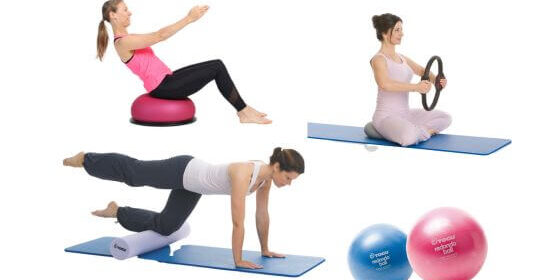In today’s world, where the pursuit of physical fitness and health is becoming increasingly important, Pilates has taken its well-deserved place. Although the name “Pilates” is already familiar to many, this training concept still holds many a secret and potential to be discovered. Pilates combines tradition and modernity to create a unique approach to training that not only improves your physical fitness, but also engages your mind.
In this blog article, you’ll learn why Pilates has become a popular choice for people of all ages looking for an effective and sustainable workout program.
Pilates – What is it actually?
Everyone knows the workout, at least everyone has heard or read the name Pilates. And most people also know that the founder of this method was Joseph Hubertus, or “Joe” Pilates (1883 – 1967). What exactly is behind it and how this training method is understood today, perhaps still needs a little clarification.
Because Pilates training can be practiced in a classical form, just as Joe developed it. He called his concept Contrology, which is based on 6 principles. Or it can be practiced in a contemporary way, modified by a multitude of variations, different sequences and by adding the latest scientific findings with a supplemented structure of principles.
What is the Pilates concept of wholeness?
In any case, both styles have one thing in common: Pilates training is holistic and the studio equipment developed by Joseph Pilates is unique and used in a correspondingly holistic way.
In Pilates terms, holistic body training means that each exercise is performed with concentration and mindfulness; the mind is always involved when exercising. It is not for nothing that Joseph Pilates quoted the poet Friedrich Schiller “It is the mind that builds the body”. This is because the instructor guides exactly when to inhale and exhale, how to target the abdominal muscles, and that the shoulder blades can sink towards the pelvis
What is the inner impulse chain?
The inner impulse chain plays a significant role in Pilates training and refers to the multi-layered activations and movement sequences within the body before any externally visible movement takes place.
In Pilates Bodymotion, special emphasis is placed on the inner impulse chain. Each movement is performed with concentration and mindfulness, actively engaging the mind during the workout. The instructor gives precise instructions on how to inhale and exhale, activate the abdominal muscles, and lower the shoulder blades toward the pelvis. This focused direction of attention creates a connection between mind and body to achieve optimal execution of the exercises.
The internal chain of impulses involves both muscular activation and body alignment. Before a movement becomes externally visible, a series of activations take place inside the body. An example is the extension and flexion of a foot while lying down.
To perform this seemingly simple movement holistically, the abdominal muscles are activated, the leg is pulled out from the hip, the chest is lowered into the mat, and the shoulder blades are allowed to slide toward the pelvis. These coordinated activations allow for optimal movement execution and promote body awareness.
The inner impulse chain illustrates that in Pilates training the path becomes the goal. It is not only about the initial or final position of an exercise, but about the conscious process and the holistic experience during the execution of the movement. By incorporating the internal impulse chain, functional, neuro-muscular movement patterns are trained and applied to everyday life. This can help to recognize and dissolve incorrect movement and posture patterns and to consolidate correct movement habits. In this way, the inner impulse chain helps to build up the body and achieve a higher level of freedom from complaints and well-being
What are the benefits of Pilates for the body?
The Pilates concept offers numerous health benefits and is particularly well suited for people who want to keep their bodies fit and healthy as they age.
- Improving posture: Pilates places great emphasis on strengthening the core of the body, thereby promoting an upright posture. This can help reduce back pain and relieve pressure on the spine.
- Muscle building and flexibility: By training the muscles, strength and flexibility are improved, which is especially important in advanced age to prevent falls and maintain mobility.
- Holistic body awareness: Pilates exercises promote body awareness and mindfulness, which can contribute to improved coordination and balance.
Stress reduction and relaxation: The conscious breathing and concentration during Pilates training have a calming effect on the mind and can help reduce stress and increase overall well-being.
Is the cost of Pilates covered by health insurance?
Pilates offers a holistic training method that can have a positive effect on health and fitness in old age. For this reason, it is interesting to know whether Pilates is supported by health insurance companies.
Some health insurance companies now recognize the health benefits of Pilates and sometimes offer subsidies or reimbursements for Pilates classes. However, it is important to note that the exact conditions and requirements may vary from health insurance company to health insurance company. It is therefore advisable to ask your own health insurance company about possible benefits or programs in the area of Pilates training. Often, certain prerequisites such as regular participation in certified courses or the recommendation of a doctor or therapist are required.
Our TOGU experts advise:
Be patient, mindful and get to know your body. Build slowly, follow instructions and respect boundaries. Regular Pilates is a journey of development – enjoy small progress and take time for recovery.
With continued practice, you’ll feel the benefits: better posture, strength and flexibility. Enjoy the journey, be open to new things and do good for your body and mind.

